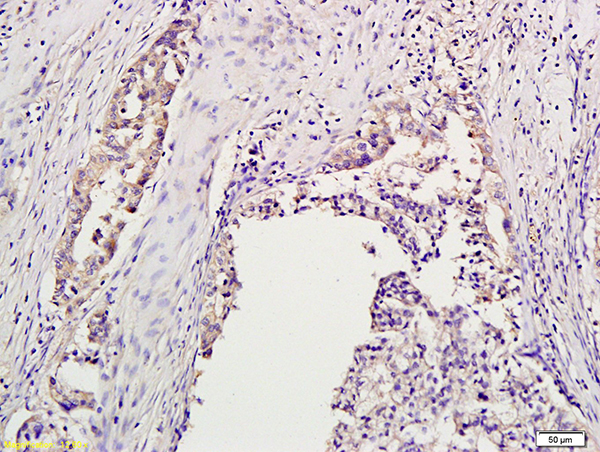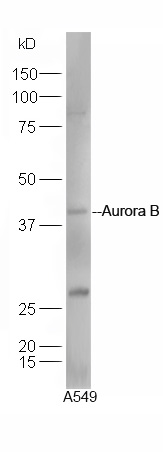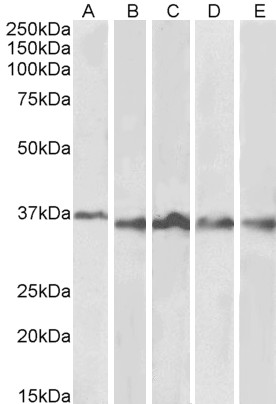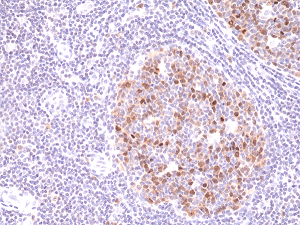
Formalin-fixed and paraffin embedded human ovary labeled with Anti-Aurora B/STK-1 Polyclonal Antibody, Unconjugated (bs-2445R) at 1:200 followed by conjugation to the secondary antibody
Aurora B Polyclonal Antibody
BS-2445R
ApplicationsFlow Cytometry, Western Blot, ELISA, ImmunoHistoChemistry, ImmunoHistoChemistry Paraffin
Product group Antibodies
ReactivityBovine, Equine, Human, Mouse, Porcine, Rabbit, Rat
TargetAURKB
Overview
- SupplierBioss
- Product NameAurora B Polyclonal Antibody
- Delivery Days Customer16
- ApplicationsFlow Cytometry, Western Blot, ELISA, ImmunoHistoChemistry, ImmunoHistoChemistry Paraffin
- Applications SupplierWB(1:300-5000), ELISA(1:500-1000), FCM(1:20-100), IHC-P(1:200-400)
- CertificationResearch Use Only
- ClonalityPolyclonal
- Concentration1 ug/ul
- ConjugateUnconjugated
- Gene ID9212
- Target nameAURKB
- Target descriptionaurora kinase B
- Target synonymsAIK2, AIM-1, AIM1, ARK-2, ARK2, AurB, IPL1, PPP1R48, STK-1, STK12, STK5, aurkb-sv1, aurkb-sv2, aurora kinase B, aurora kinase B-Sv1, aurora kinase B-Sv2, aurora- and Ipl1-like midbody-associated protein 1, aurora- and Ipl1-like midbody-associated protein 1 homolog, aurora-1, aurora-B, aurora-related kinase 2, aurora/IPL1-related kinase 2, protein phosphatase 1, regulatory subunit 48, serine/threonine kinase 12, serine/threonine-protein kinase 12, serine/threonine-protein kinase 5, serine/threonine-protein kinase aurora-B
- HostRabbit
- IsotypeIgG
- ReactivityBovine, Equine, Human, Mouse, Porcine, Rabbit, Rat
- Storage Instruction-20°C
- UNSPSC12352203
References
- Li C, Zhao GQ, Che CY, et al. Expression of dectin-1 during fungus infection in human corneal epithelial cells. Int J Ophthalmol. 2014,7(1):34-7. doi: 10.3980/j.issn.2222-3959.2014.01.06Read this paper





